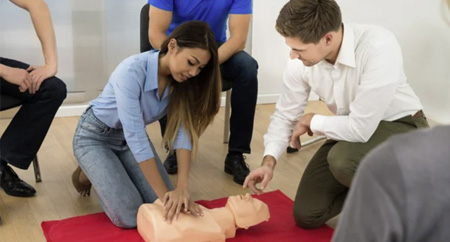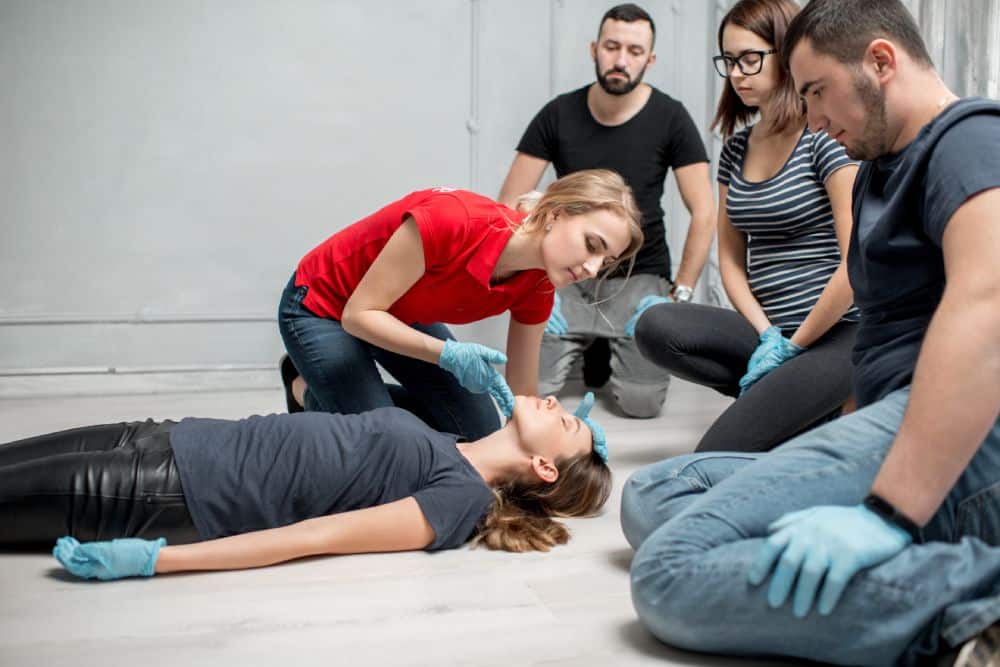Introduction
Cardiopulmonary Resuscitation (MOUTH-TO-MOUTH RESUSCITATION) is more than just a collection of chest compressions and breaths; it's a life-saving ability that can be the distinction between life and fatality in emergency situations. The knowledge gained from a first aid course or CPR course can equip people to react effectively when confronted with a heart attack, choking incident, or other crucial emergency situations. This short article explores the real-life applications of mouth-to-mouth resuscitation, highlighting its importance and the influence of training on saving lives.
Real-Life Applications of CPR: When Educating Saves Lives
Understanding CPR
CPR is a crucial emergency situation treatment utilized to maintain brain function until further measures are required to recover spontaneous blood circulation and breathing. It includes 2 elements:
Chest Compressions: These resemble the heart's pumping action to maintain blood flow. Rescue Breaths: These provide oxygen to the lungs, crucial for survival.The efficiency of mouth-to-mouth resuscitation substantially enhances when executed instantly after cardiac arrest. Researches show that immediate CPR can double or triple the opportunities of survival for victims.
Importance of First Aid Courses
First aid courses equip individuals with vital skills past mouth-to-mouth resuscitation, including injury treatment, identifying strokes, and taking care of fractures. By taking part in these training courses, you're not simply learning more about emergencies; you're preparing yourself to act decisively when it matters most.
Key Parts of First Aid Courses
- Basic Life Assistance (BLS): Covers adult, kid, and infant mouth-to-mouth resuscitation techniques. Choking Alleviation Techniques: Consists of back impacts and abdominal thrusts. Wound Administration: Just how to clean up and clothe wounds properly. Recognizing Emergencies: Comprehending when to call for assistance versus taking care of a situation independently.
The Role of mouth-to-mouth resuscitation in Heart Attack Situations
Every year, numerous thousands experience cardiac arrest outside medical facilities. Without immediate treatment, the survival price drops substantially every minute that passes without CPR.
Statistics on Heart attack Survival Rates
|Time Without CPR|Survival Price (%)|| ------------------|-------------------|| 1 Min|90|| 5 Minutes|50|| 10 Minutes|10|
Source: American Heart Association

Being learnt mouth-to-mouth resuscitation makes certain that spectators can action in confidently throughout these vital moments.
Real-Life Study Showing Successful CPR Application
Case Research 1: The Quick-Thinking Bystander
In a dynamic café one sunny mid-day, a specific broke down due to cardiac arrest. A close-by diner who had actually completed a first aid and mouth-to-mouth resuscitation course jumped into activity. They began carrying out chest compressions while one more patron called 911. Within mins, paramedics arrived and made use of an Automated External Defibrillator (AED), eventually restoring the patient.
Case Research study 2: Office Emergency
During a corporate training occasion, a staff member instantly dropped unconscious. Fortunately, several coworkers were licensed in both first aid training courses and advanced life support techniques. Their speedy response consisted of calling emergency services while performing high-quality CPR till assistance arrived.
Why Participate in mouth-to-mouth resuscitation Courses?
CPR courses deal hands-on training that constructs self-confidence in your capacities during emergencies. Here are some compelling reasons to enroll:
Life-Saving Skills: You discover exactly how to save lives. Boost Confidence: Practical works out aid seal your skills. First Aid Course Brisbane Certification Opportunities: Numerous training courses give certifications upon completion. Community Influence: Trained individuals add positively to society by being ready for emergencies.What Are the Various Types of Mouth-to-mouth Resuscitation Courses Available?
When considering which training program matches your demands best, it is very important to understand the numerous kinds of readily available training courses:
Basic Adult/Child/Infant CPR Course
This program concentrates on age-specific techniques customized for adults, youngsters, and babies with detailed hands-on technique on mannequins.
Advanced Cardiovascular Life Support (ACLS)
Geared toward healthcare professionals, ACLS builds on basic life support skills with advanced interventions like medicine administration and advanced air passage management.
Pediatric Advanced Life Assistance (PALS)
Designed for doctor who handle critically sick babies and youngsters; PALS includes circumstances details to pediatric emergencies.
Online vs In-Person Training
Many organizations now use on the internet components which can supplement standard classroom discovering but do not change hands-on practice important for understanding skills like breast compressions.
Benefits of Having an Emergency Treatment Certificate
Obtaining a first aid certificate shows your dedication to security and preparedness in various environments-- whether at home or work-- boosting both professional credibility and personal assurance when emergency situations arise.
Career Advantages
Having accreditation can enhance employability in areas such as education, healthcare sectors, fitness training sectors where safety is paramount.
Common Misconceptions Concerning CPR
It's essential to resolve misconceptions surrounding this crucial ability:
Myth # 1: "Just Clinical Professionals Ought To Execute CPR"
Fact: Any person can do standard life-saving techniques if trained properly; you don't require medical expertise!
Myth # 2: "You Can Hurt A Person by Executing mouth-to-mouth resuscitation"
While it's true there's some threat involved-- it's much surpassed by the potential benefits when performed correctly!
Myth # 3: "mouth-to-mouth resuscitation Is Only Necessary For Adults"
Children likewise require prompt treatments; hence recognizing pediatric methods is just as vital!
FAQs Concerning Real-Life Applications of CPR
FAQ 1: What ought to I do if I see somebody collapse?
If you witness someone collapse:
- Check responsiveness Call emergency services Begin doing CPR immediately if they reveal no indicators of breathing
FAQ 2: Just how commonly should I renew my certification?
Most companies recommend restoring your first aid certification every 2 years due to evolving standards and practices.
FAQ 3: Can I find out CPR online?
While online courses supply useful information, hands-on technique is required for understanding skills efficiently-- search for hybrid alternatives if possible!
FAQ 4: What are some ideas for executing reliable upper body compressions?
Aim for:

- A depth of at the very least two inches A price around 100-120 compressions per minute Allow full recoil in between compressions without lifting hands off the upper body
FAQ 5: Do I need unique tools for carrying out rescue breaths?
No special tools is called for! Nonetheless utilizing barrier tools like face guards can improve safety and security while offering rescue breaths if available.
FAQ 6: What duty does AED play in conjunction with CPR?
Automated External Defibrillators assess heart rhythm & & recommend whether shocks are needed which substantially increases chances of survival when used alongside top notch upper body compressions!
Conclusion
The real-life applications of CPR are indisputable; they extend far beyond theoretical expertise right into actual circumstances where lives are saved through crucial actions taken by qualified individuals. Registering in a detailed first aid course or participating in specialized CPR courses equips you with indispensable skills that can make all the difference throughout an emergency circumstance-- not just benefitting others however empowering yourself as well! The time spent today prepares you for whatever tomorrow might bring-- and isn't that something worth considering?
